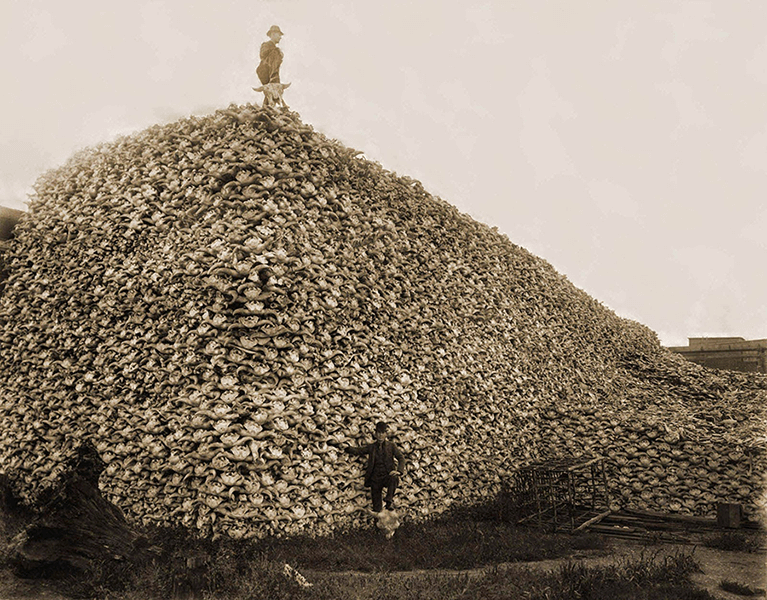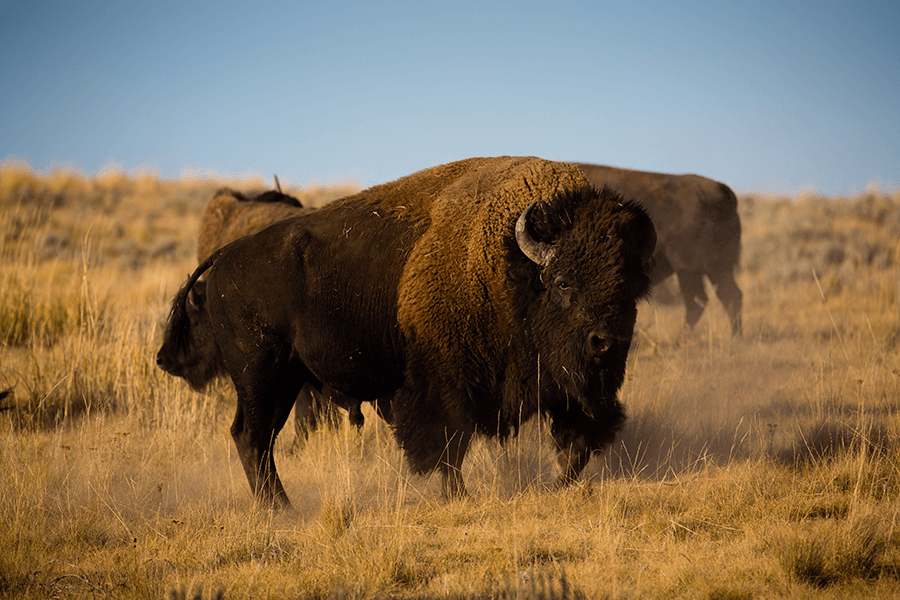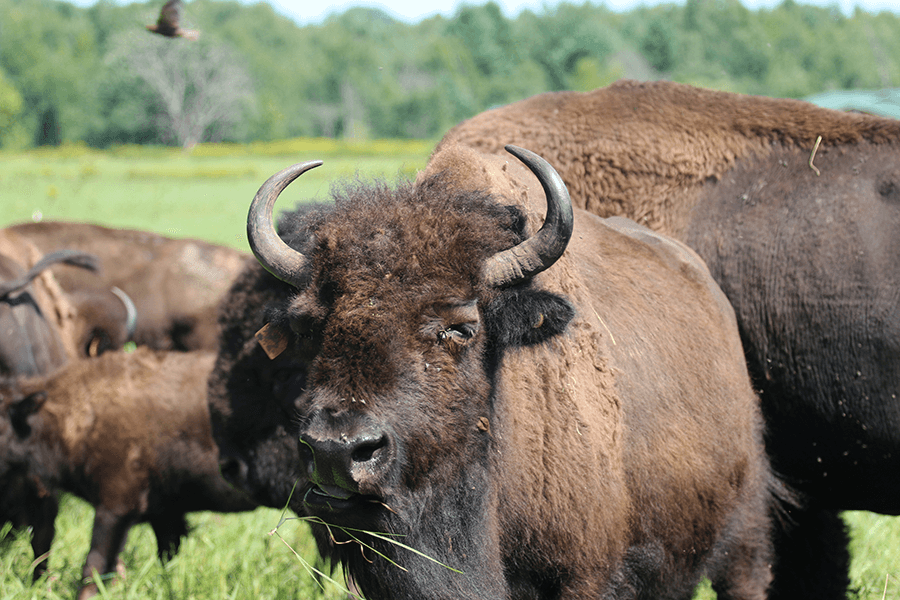Exactly one year ago, former President Barack Obama signed the American Bison Legacy Act into law. The American Bison Legacy Act designated the North American Bison as the National Mammal, officially recognizing its place in the country’s cultural, economic and ecological heritage. It was proclaimed a national success when signed into law. However, there were no environmental protections to get bison back on the grasslands they once roamed, no requirements or established standards for their treatment in the wild or on ranches. If we want to truly honor the important role that bison have played throughout American history and celebrate the future of the animal, we need to support humane ranchers, conscious companies, and establish regulations that improve their quality of life. In doing so, we'll in turn improve our grasslands and ecosystems.
Experts estimate that 30-60 million American bison roamed the vast grasslands of North America when European settlers first arrived. They traveled in massive herds and were a critical life-giving source to indigenous people across millions of acres. Perhaps more importantly, they played an essential role in shaping the ecology of the Great Plains and the earth’s atmosphere as a whole. By grazing heavily on native grasses and aerating the soil with their hooves, they helped plants and other animal populations flourish while keeping carbon-sequestering grasslands strong. As colonization swept across North America, their herds were slowly curtailed and moved further and further west, until things reached a breaking point in the mid-19th century. In a combination of American expansion and their desire to eliminate the animals Native Americans relied on most, U.S. leaders openly endorsed the over-hunting and mass-slaughtering of millions of bison. At the height of the killing, four million of them died between 1872-1874. According to the Fish and Wildlife Service, there were less than 100 free ranging bison in the United States by the late 1880’s.

The impact of this was two-fold. In a matter of years, the slow burn of the bison population loss turned into a wildfire that nearly consumed their existence. By facilitating this effort, the U.S. almost extinguished the animal most responsible for the shaping its vital grasslands — and paid the price for replacing it with improperly managed cattle and rows of degenerative monoculture cropland. Without the bison nurturing their soil, native plants, and animals, the grasslands rapidly deteriorated. Finally, roughly 60 years after the destruction of the population, the dust bowl formed and nearly broke the back of middle America.
Thankfully, things have improved since then. No longer targeted by anti-Native American policies, bison were formally recognized by animal conservation groups as a species on the brink of extinction. As a result, small pockets of land—many privately owned—were carved out for conservancy efforts over the past century. One of the least expected voices to rally behind bison: ranchers.
Believe it or not, cattlemen have been instrumental in growing the current bison population to nearly 500,000—a number that was roughly 30,000 just a few decades ago. As bison products have skyrocketed in popularity, so has the number of buffalo. The mainstream discourse has yet to shift beyond fostering their spiking population, though. Sadly, industry negligence and loose federal regulations still allow many meat producers to cut corners with the way they feed and raise their bison. Our national mammal deserves better, and it’s up to Americans to demand it.

Fortunately, there is reason for optimism here. When the bald eagle was listed as an endangered species in 1966, only 417 nesting pairs were left in America. But thanks to laws like the Endangered Species Act of 1973, the birds now have over 10,000 breeding pairs, have protected habitats, and are no longer facing extinction. The northern Rocky Mountain wolf, which was listed as endangered in 1973, was similarly revived by the Northern Rocky Mountain Wolf Recovery Plan and programs to get them back in native ecosystems, like Yellowstone National Park. More so, the movement for grass-fed meat and more humane treatment of animals is continuing to pick up steam—a sign that more and more, people are voting with their dollars to support ranchers who are helping animals feed and live as they were biologically intended. No matter how you slice it, there’s a roadmap in place to revive and restore the bison population. It’s up to all of us to push for it.
So, we’ve got a decision to make. If we truly want to honor the legacy of the American bison, a title won’t suffice. Rather, we as producers and consumers have to make an effort to improve their quality of life by supporting ranchers who are doing things right. We have to continue growing the food revolution against typical industrial food industry practices and demand that our lawmakers pass legislation that mirrors these efforts. Hand in hand, our grassroots efforts paired with more thorough political efforts can ensure bison get the opportunity to inhabit and restore the grasslands they have called home for thousands of years. Otherwise, the title “National Mammal” is exactly what it sounds like: just a title.




